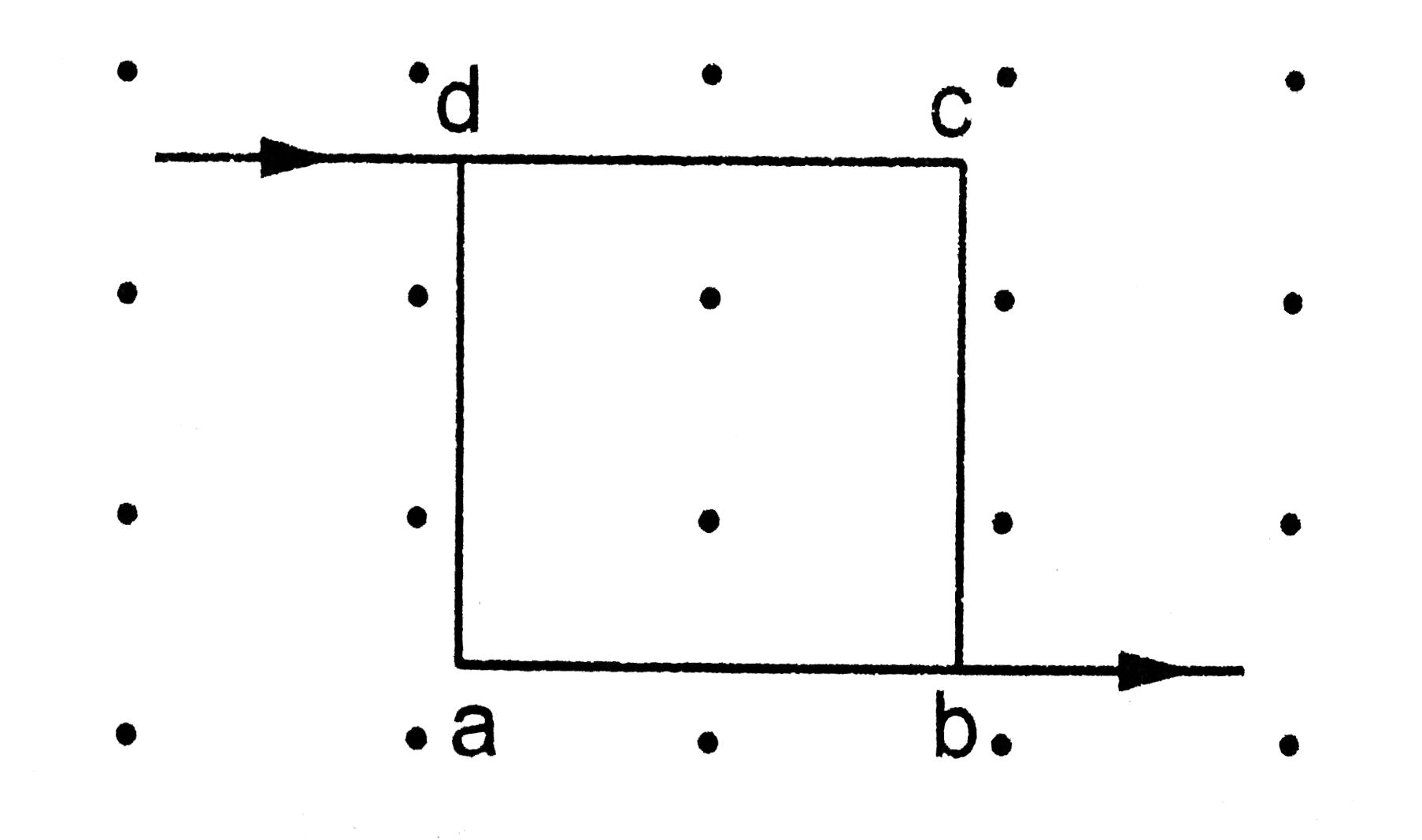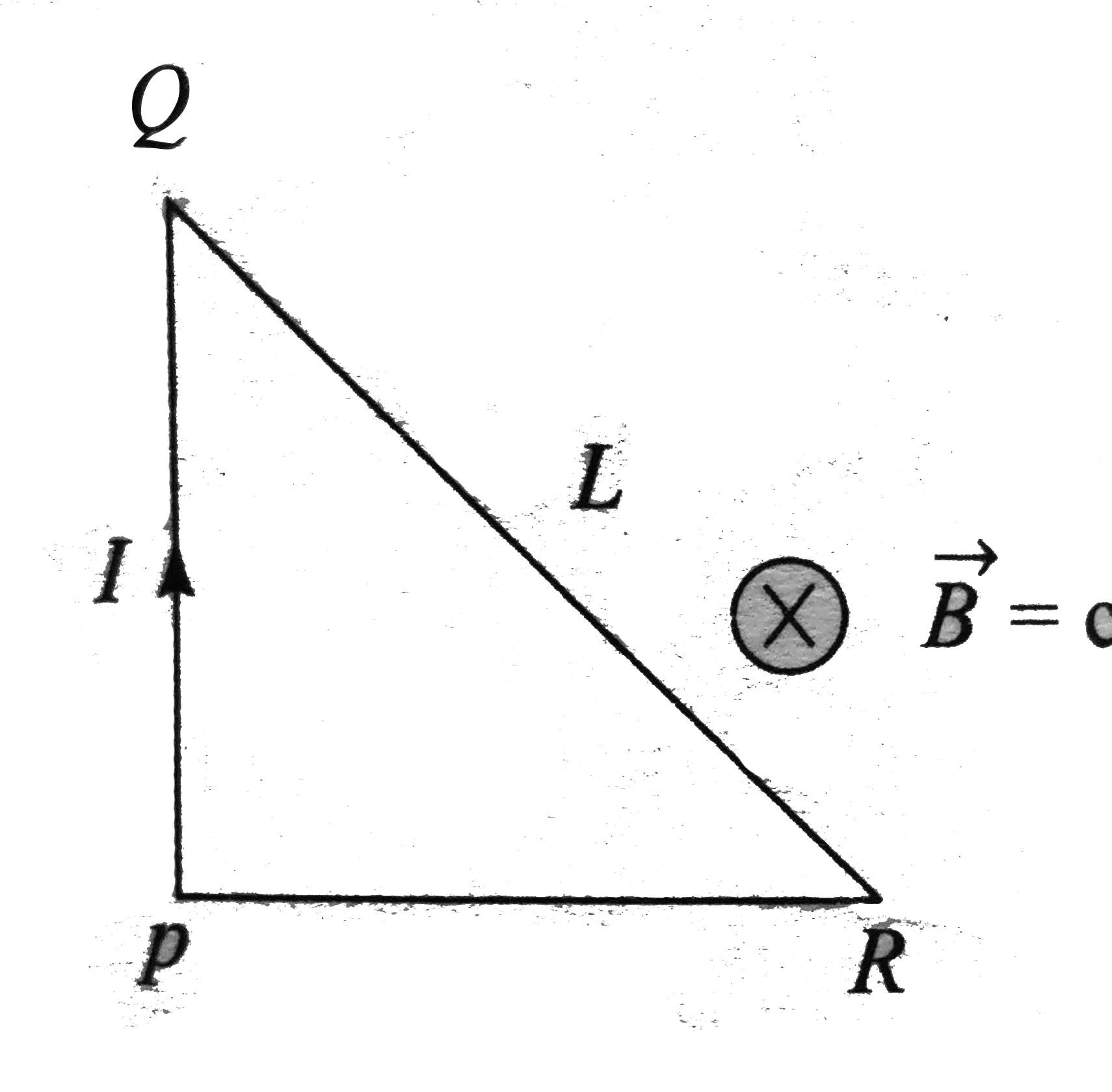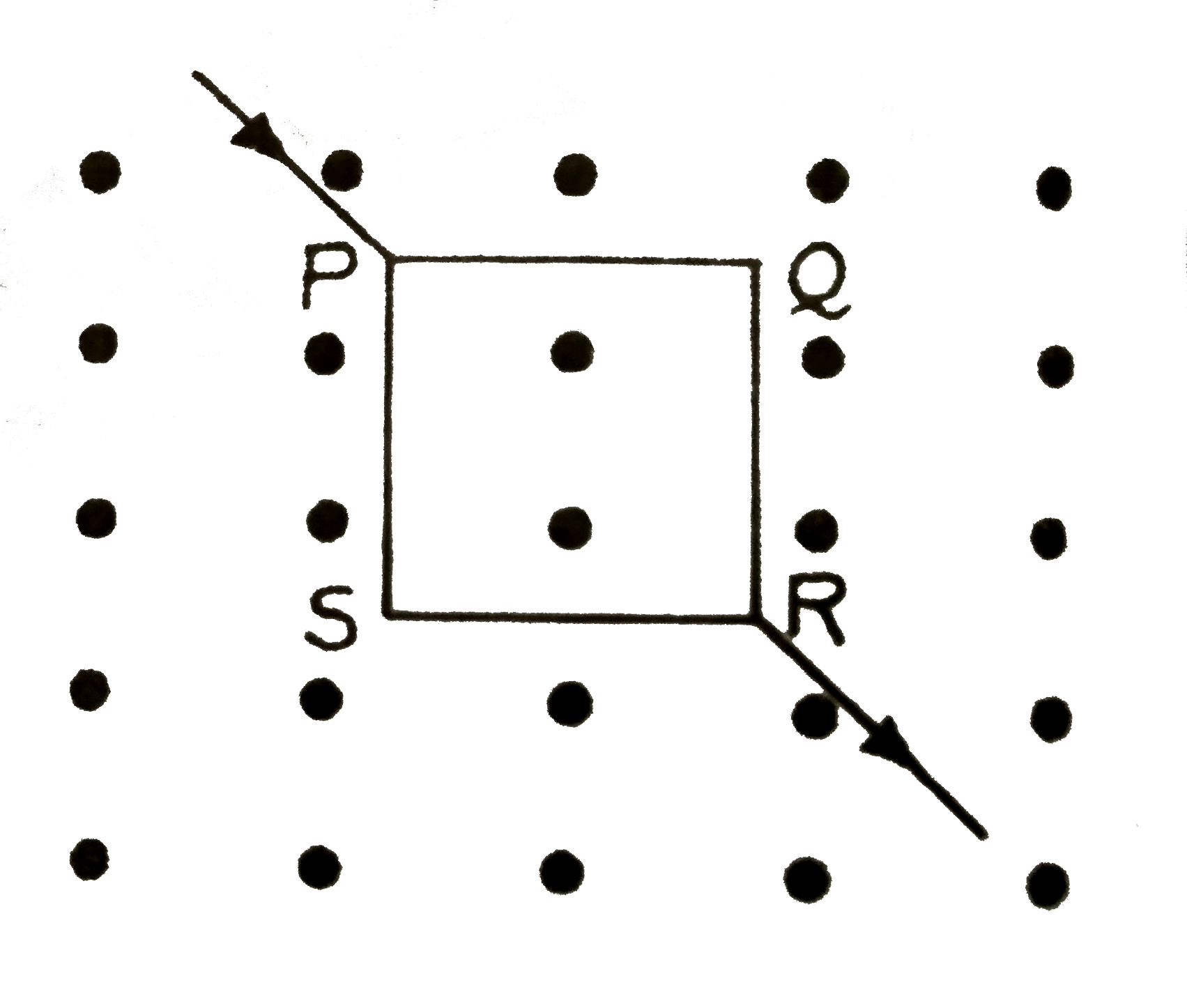The rectangualr wire- frame, shown in has a width d, mass m, resistance R and a large length. A uniform magnetic field B exists to the left of the frame. A constant force F starts pushing the frame into the magnetic field at t =0. (a) Find the acceleration of the frame when its speed has increased to v. (b) Show that after some time the frame will move with a constant velocity till the whole frame enters into the magnetic field. find this velocity v0. (c) show that the velocity at tiem t is given by v=v0(1−e−Ftmv0.
 Solution in Tamil
Solution in Tamil
e.m.f developed = Bdv
(when it attains a speed v)
Current=BlvR
thisforceopposesthegivenforce
NetF=F−Bd2v2RRF−Bd2v2R
≠tae≤ration=RF−Bd2v2mR
(b)Velocitybecomesconstantwhenae≤rationis0.
(Fm)−Bd2v2mR[V=V0attˆ∈stant]
=(Fm)−Bd2v2mR
⇒V0=FRB2d2
(c)Velocityattime
∴a=dvdt
⇒Rf−l2B2v2mR=dvdt
⇒∫v0dvRF−l2B2v=∫t0dtmR
⇒[In(RF−l2B2v)]v0=[tRm]t0−In(RF)=l2B2tRm
⇒l2B2vRF=1−el2B2vRm
v=FRl2B2(1−eB2l2v0tRv□m))
=v0(1−e−Ftv0m.
Topper's Solved these Questions
- BOOK - HC VERMACHAPTER - ELECTROMAGNETIC INDUCTIONEXERCISE - Objective 210videos
ELECTROMAGNETIC INDUCTION
- BOOK - HC VERMACHAPTER - ELECTRIC FIELD AND POTENTIALEXERCISE - Exercises75videos
ELECTRIC FIELD AND POTENTIAL
- BOOK - HC VERMACHAPTER - ELECTROMAGNETIC WAVESEXERCISE - Exercise9videos
ELECTROMAGNETIC WAVES
Similar Questions
A bar magnet is moved along the axis of a copper ring placed far away from the magnet. Looking from the side of the magnet, an anticlockwise current is found to be induced in the ring. Which of the following may be true?
03:54View SolutionFind the dimensional formula of ε0 .
01:44View SolutionShow that the dimensions of the displacement current (ε0dΦEdt) are that of an electric current.
04:05View SolutionA current of 2 A enters at the corner d of a square frame abcd of side 20 cm and leaves at the opposite corner b. A magnetic field B= 0.1 T exists in the space in a direction perpendicular to the plane of the frame as shown in Find the magnitude and direction of the magnetic forces on the four sides of the frame.
 04:22View Solution
04:22View SolutionThe rigid conducting thin wire frame carries an electric current I and this frame is inside a uniform magnetic field →B as shown in Fig. 1.146. Then,
 02:57View Solution
02:57View SolutionA horizontal wire is free to slide on the verticle rails of a conducting frame as shown in figure. The wire has a mass m and length l and the resistance of the circuit is R . If a uniform magnetic field B is directed perpendicular to the frame, the terminal speed of the wire as it falls under the force of gravity is
04:16View SolutionThe figure shows a right angled isosceles triangle wire frame. The wire frame starts entering into the region of uniform magnetic field with constant velocity v at t=0. If I is the instantaneous current through the frame, then choose the corrent graph between I & t.
 03:50View Solution
03:50View SolutionA uniform magnetic field B exists in a direction perpendicular to the palne of a square frame made of copper wire. The wire has a total length of 40cm . The magnetic field changes with time at a steady rate (dB/dt)=0.02T/sec . Find the current induced in the frame. Resistance of wire =I0Ω
View SolutionA uniform magnetic field B exists in a cylindrical region of radius I0cm as shown in figure. A uniform wire or length 80cm and resistance 44.0Omega is bent into a square frame and is placed with one side along a diameter of the cylindrical region. if the magnetic field increases at a constant rate of 0.0I0T//sec , the current induced in the frame
View SolutionABC is a triangular frame made of a conducting wire and is right angled at B. Its side BC is vertical and AB is horizontal. The frame is placed in a uniform magnetic field B in vertically upward direction. The frame is rotated about its side BC with constant angular speed ω. Resistance of the entire frame is R. Neglect gravity. Length AB=L,BC=2L.
(a) Find the torque needed to keep the frame rotating with constant angular speed.
(b) Find the potential difference between points A and C.04:53View SolutionSame current i=2 A is flowing in a wire frame as shown in the figure. The frame is a combination of two equilateral triangles ACD and CDE of side 1 m. It is placed in uniform magnetic field B=4 Tacting perpendicular to the plane of frame. The magnitude of magnetic force acting on the frame is
 06:33View Solution
06:33View SolutionFind the magnitude of magnetic force on the frame, as shown. The magnetic field acting as shown:
06:33View Solution20 सेमी भुजा का चालक-तार का एक वर्गाकार फ्रेम PQRS चित्रानुसार 0.10 टेस्ला के एक चुंबकीय क्षेत्र में स्थित है। चुंबकीय क्षेत्र फ्रेम के तल के लंबवत ऊपर को दिष्ट है। 2.0 ऐम्पियर की वैधुत धारा फ्रेम कोने R से निकलती है । फ्रेम की भुजाओं पर आरोपित चुंबकीय बल ज्ञात कीजिए ।
 02:12View Solution
02:12View SolutionA copper wire of length 40cm, diameter 2mm and resistivity 1.7xx10^(-8)Omega m forms a square frame. If a uniform magnetic field B exists in a direction perpendicular to the plane of square frame and it changes at a steady rate (dB)/(dt)=0.02 T/s, then find the current induced in the frame.
03:37View SolutionA copper wire of length 40 cm, diameter 2mm and resistivity 1.7×10−8Ωm form a square frame. If a uniform magnetic field B exists in a direction perpendicular to the plane of square frame and it changes at a steadyrate dBdt=0.02 T/s, then find the current induced in the frame.
06:29View SolutionThe magnetic force depends on v which depends on the inertial frame of reference. Does then the magnetic force differ from inertial frame to frame ? Is it reasonable that the net acceleration has a different value in different frames of reference ?
02:50View Solution

